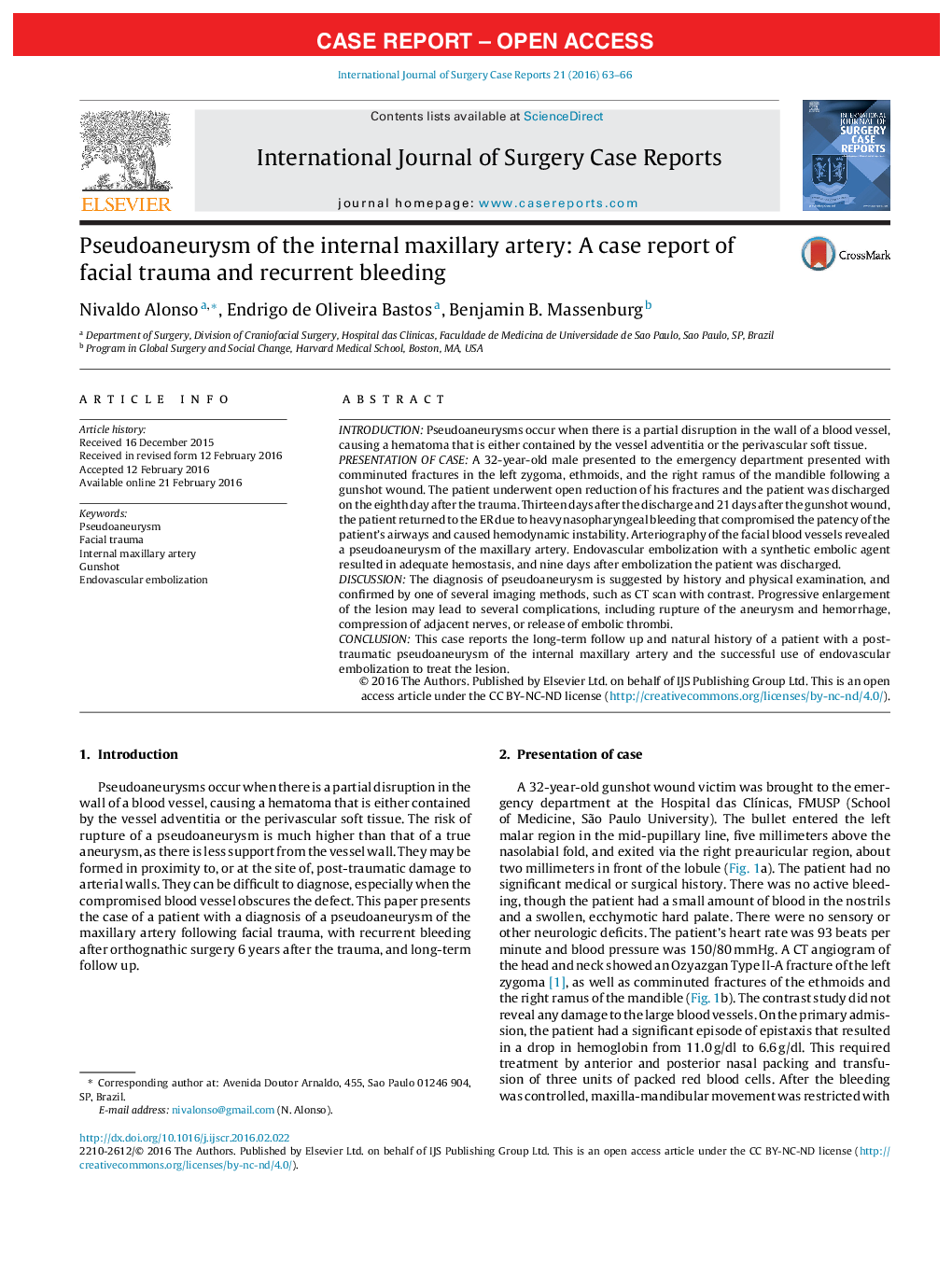| کد مقاله | کد نشریه | سال انتشار | مقاله انگلیسی | نسخه تمام متن |
|---|---|---|---|---|
| 4288362 | 1612093 | 2016 | 4 صفحه PDF | دانلود رایگان |

• Pseudoaneurysms occur when there is a partial disruption in the wall of a blood vessel.
• Most pseudoaneurysms of the maxillary artery develop on the terminal pterygopalatine segment.
• Endovascular embolization can be used successfully to treat a pseudoaneurysm
IntroductionPseudoaneurysms occur when there is a partial disruption in the wall of a blood vessel, causing a hematoma that is either contained by the vessel adventitia or the perivascular soft tissue.Presentation of caseA 32-year-old male presented to the emergency department presented with comminuted fractures in the left zygoma, ethmoids, and the right ramus of the mandible following a gunshot wound. The patient underwent open reduction of his fractures and the patient was discharged on the eighth day after the trauma. Thirteen days after the discharge and 21 days after the gunshot wound, the patient returned to the ER due to heavy nasopharyngeal bleeding that compromised the patency of the patient’s airways and caused hemodynamic instability. Arteriography of the facial blood vessels revealed a pseudoaneurysm of the maxillary artery. Endovascular embolization with a synthetic embolic agent resulted in adequate hemostasis, and nine days after embolization the patient was discharged.DiscussionThe diagnosis of pseudoaneurysm is suggested by history and physical examination, and confirmed by one of several imaging methods, such as CT scan with contrast. Progressive enlargement of the lesion may lead to several complications, including rupture of the aneurysm and hemorrhage, compression of adjacent nerves, or release of embolic thrombi.ConclusionThis case reports the long-term follow up and natural history of a patient with a post-traumatic pseudoaneurysm of the internal maxillary artery and the successful use of endovascular embolization to treat the lesion.
Journal: International Journal of Surgery Case Reports - Volume 21, 2016, Pages 63–66